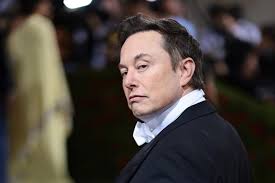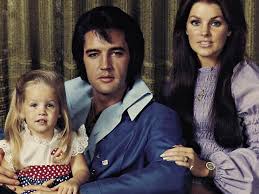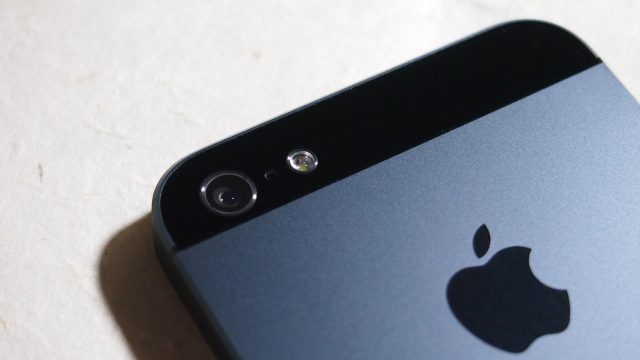How Did Elon Musk Make His Money?

industries, from online payments to electric cars and even space exploration. Over the years, Musk has amassed billions of dollars in wealth, and his success story is one of the most closely followed in modern business history. In this article, we will explore how Musk made his money, detailing his early beginnings, key ventures, and the strategic decisions that propelled him into the billionaire ranks.
Early Life and First Entrepreneurial Endeavors
Born in Pretoria, South Africa, on June 28, 1971, Elon Musk displayed an early interest in technology and business. His mother, Maye Musk, was a dietitian and model, while his father, Errol Musk, was an electromechanical engineer, which may have influenced Musk’s early fascination with engineering and entrepreneurship. Musk’s early years were marked by his curiosity and intellectual prowess; he taught himself computer programming and created his first video game, Blastar, at the age of 12.
After completing high school in South Africa, Musk moved to Canada to attend Queen’s University before transferring to the University of Pennsylvania, where he earned degrees in both economics and physics. His education laid the foundation for his later ventures, which would blend business acumen with cutting-edge scientific knowledge.
However, it wasn’t until the mid-1990s, when Musk moved to California, that his path to wealth truly began to take shape.
Zip2: The First Big Break
In 1995, Musk dropped out of a PhD program at Stanford University after just two days. His decision to leave academia was driven by his desire to pursue business opportunities in the rapidly expanding tech world. Musk co-founded his first company, Zip2, with his brother Kimbal. Zip2 was an online city guide software company designed to help newspapers build websites by providing maps and business directories.
The company quickly gained traction, and in 1999, Compaq (which was later acquired by Hewlett-Packard) bought Zip2 for $307 million in cash. Musk’s share of the sale was $22 million, providing him with his first significant amount of capital. This windfall allowed him to pivot into even bigger projects, eventually setting the stage for the companies that would make him a household name.
X.com and PayPal: A Financial Revolution
After the Zip2 sale, Musk used his earnings to launch X.com, an online payment company, in 1999. X.com sought to revolutionize financial services by providing online money transfers. Musk’s vision for X.com went beyond just payments—he imagined creating an entire digital banking system that would make financial transactions more efficient and accessible.
However, X.com’s early development was turbulent. Musk was replaced as CEO in 2000 by the company’s board, though he retained a significant stake in the business. Under new leadership, X.com focused exclusively on its payment platform, which was rebranded PayPal. PayPal’s easy-to-use service became a hit among eBay sellers, and its popularity exploded.
In 2002, PayPal was acquired by eBay for $1.5 billion in stock, and Musk’s share of the sale was around $165 million. At the time of the acquisition, PayPal was the largest online payment platform in the world, and its success cemented Musk’s reputation as a formidable entrepreneur.
SpaceX: Venturing Into Space
With his newfound wealth, Musk set his sights on an ambitious new goal: making space travel affordable and accessible. In 2002, Musk founded Space Exploration Technologies Corp., or SpaceX, with the long-term goal of reducing the cost of space exploration and ultimately colonizing Mars. Initially, SpaceX’s journey was fraught with setbacks, including failed rocket launches and financial struggles.
Despite these challenges, Musk’s persistence paid off. In 2008, SpaceX became the first privately funded company to launch a rocket, Falcon 1, into orbit. This success marked a turning point for the company, which began to attract significant government contracts, particularly from NASA. By developing reusable rockets, SpaceX drastically reduced the cost of launching payloads into space, a feat that had long been considered unfeasible.
The company’s crowning achievement came in 2012, when SpaceX’s Dragon spacecraft became the first privately funded spacecraft to dock with the International Space Station (ISS). Since then, SpaceX has continued to push the boundaries of space travel, securing billions in government and private contracts, as well as launching the Starship project, which aims to facilitate crewed missions to Mars.
As of 2024, SpaceX’s estimated valuation is around $137 billion, making it one of the most valuable private companies in the world. Musk’s stake in SpaceX is a significant part of his net worth, which fluctuates based on the company’s performance.
Tesla: Electrifying the Automotive Industry
In 2004, Musk joined Tesla Motors (now Tesla, Inc.) after leading a round of funding for the electric car company. While Musk was not the original founder of Tesla, he played a critical role in transforming the company from a niche electric vehicle maker into one of the most valuable automakers in the world.
Tesla’s journey began with the Roadster, a luxury electric sports car that proved electric cars could be both high-performance and eco-friendly. However, it wasn’t until the release of the Model S in 2012 that Tesla gained widespread recognition. The Model S was praised for its long range, sleek design, and cutting-edge technology, marking a milestone in the electric vehicle industry.
Tesla’s innovation didn’t stop there. Musk also spearheaded the development of Autopilot, a semi-autonomous driving system, and the Powerwall, a home energy storage product. Under his leadership, Tesla’s stock price surged, particularly in the late 2010s and early 2020s, driven by the company’s rapid growth, profitability, and ambitious plans for expansion.
In 2020, Tesla became the most valuable automaker in the world, surpassing traditional car giants like Toyota and Volkswagen. Tesla’s market capitalization briefly exceeded $1 trillion, making it one of the most valuable companies globally. Musk’s personal fortune, largely tied to Tesla stock, skyrocketed during this period, cementing his status as one of the wealthiest individuals on the planet.
The Boring Company and Neuralink
Aside from Tesla and SpaceX, Musk has been involved in several other ventures, albeit less high-profile. In 2016, he founded The Boring Company, with the goal of reducing traffic congestion through underground tunnel systems. While still in the early stages, the company has received attention for its potential to revolutionize transportation by building faster, more efficient transit systems.
Another Musk-backed venture, Neuralink, focuses on developing brain-machine interfaces. Founded in 2016, Neuralink aims to merge the human brain with artificial intelligence, initially to help treat neurological diseases but with broader implications for human enhancement. While Neuralink is still in its research and development phase, it has already sparked significant interest in the intersection of neuroscience and technology.
Twitter Acquisition: A Controversial Move
In 2022, Musk made headlines with his $44 billion acquisition of Twitter, the social media giant. Musk’s purchase was marked by controversy, as he faced pushback from both employees and Twitter users over his plans to reshape the platform. His stated goal for Twitter was to make it a “town square for free speech” and address issues like misinformation and censorship. However, the acquisition process and subsequent leadership decisions led to public scrutiny, with many questioning Musk’s approach to managing the platform.
While the Twitter acquisition has had mixed results, it added another significant asset to Musk’s portfolio, with Musk himself taking a hands-on role in the company’s operations.
Philanthropy and Musk’s Future
Despite his wealth, Musk has expressed a desire to use his fortune to tackle some of humanity’s most pressing challenges. He has committed to several philanthropic causes, particularly in areas related to renewable energy, education, and artificial intelligence. In 2021, Musk pledged to donate a substantial portion of his wealth to charitable causes, including the Musk Foundation, which supports renewable energy research, science education, and global health.
In terms of future ventures, Musk’s focus remains on expanding SpaceX’s operations, accelerating Tesla’s transition to sustainable energy, and pioneering technologies that could have a transformative impact on society.
Conclusion
Elon Musk’s path to wealth is a combination of timing, innovation, and relentless ambition. From the early days of Zip2 to his work with PayPal, SpaceX, Tesla, and beyond, Musk has continually pushed the boundaries of what is possible, both in technology and business. His ability to identify opportunities in emerging industries and his willingness to take calculated risks have been key drivers of his success.






